Patient and Family Seal of Collaboration
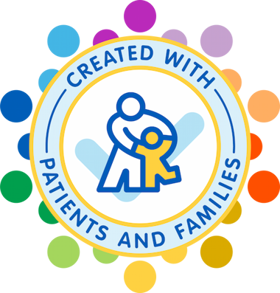
At Children’s Mercy, we place the highest priority on patient and family partnership in the care of the children in our community. Our Seal of Collaboration program encourages patients, families and Children’s Mercy team members to share ideas and work together to make experiences better.
Encouraging active partnerships
The goal of this seal program is to encourage active partnership between patients, families and team members on things like documents, programs and projects in our organization. These projects can be one-time things, like making an educational document for caregivers. It might be ongoing work, like improving our facilities.
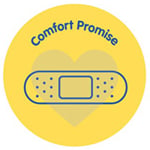
Making needle procedures more comfortable
Kids tell us that one of the things they worry about when coming to Children’s Mercy is getting a shot or poke. Health care procedures, especially when they involve a needle, can be scary. Our team partnered with parents to develop the Comfort Promise so this experience could be better. Families helped co-designed community social media messaging, instructional videos, caregiver flyers and many additional materials to make this promise well known to families and team members.
Do you have an idea you would like to share?
Fill out this simple form to connect with the Office of Patient Experience. We can help by:
- Talking through your idea
- Connecting patients and families with team members for partnership
- Providing guidance throughout the process
How does the program work?
- After you've completed the project work, submit an application for the seal.
- Applications will be reviewed on a rolling basis by a committee of patient, family, and staff representatives.
- Our department will notify your project owners to let you know the status of your application once it has been reviewed.
Ready to apply for the seal?
- Applications must be completed and approved by the committee prior to applying this seal to your project.
- Projects previously completed with patient, family and staff collaborative effort may apply for this seal retroactively.
Examples of collaboration
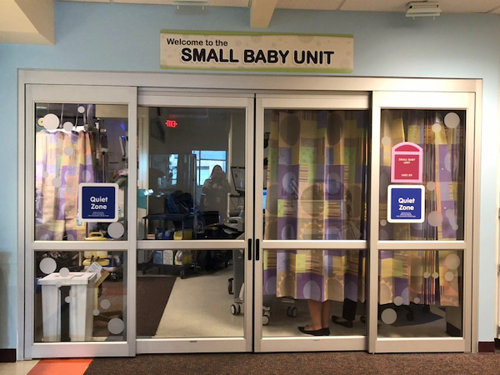
Designing for the tiniest preemies
When Children's Mercy added a new unit specially designed for the tiniest preemies who require the most critical care, they reached out to families who had been there. Parents of these vulnerable babies, who are also on the NICU PFAC (Patient Family Advisory Council) collaborated with medical staff to develop the Small Baby Unit within our Level 4 NICU. From design of the interior to optimize a quiet space while still allowing for parent connection, to calming paint colors and placement of signage around the unit, parents' input was vital. Beyond the physical space, parents also participated in creation of policies and education around kangaroo care.
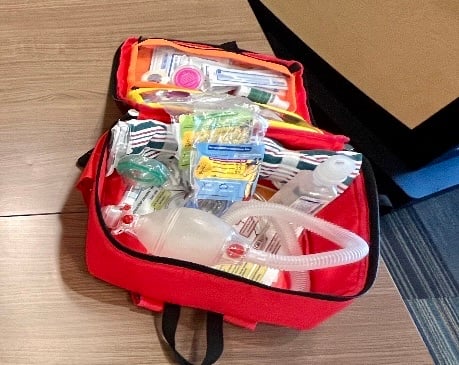
Emergency Trach Go Bag
When parents of children with tracheostomies shared the headache of planning, packing, and organizing the emergency supplies needed in case of a trach emergency, the trach program staff at Children’s Mercy knew they needed to help. It is essential for trach patients (and their caregivers) to have life sustaining supplies and care instructions organized and available at all times. Packing multiple bags was confusing and overwhelming for families, and missing a supply could be devastating. Staff and parents from the Trach PFAC (Patient Family Advisory Council) collaborated to design and fine tune a trach “go bag.” These were first designed in Children’s Mercy blue, before being changed to red to signify “emergency/important.” These bright red bags contain all the supplies a trach patient might need in case of an emergency and are organized in a way that makes them easy to use. Now, this is one less worry for parents of children living with a trach.
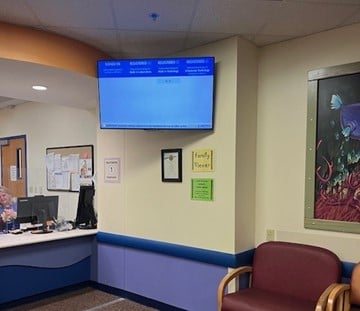
Family Viewer Screen
The Laboratory, Radiology and Patient Access Teams identified opportunities for improvement for those visiting our Children's Mercy Kansas Lab and Radiology locations. The teams noticed families' confusion around the combined waiting area, resulting in families being frustrated about the check in process and wait times. These observations inspired the teams to collaborate with parents from the Kansas PFAC (Patient Family Advisory Council) and Information Systems to create a “Family Viewer.” This display screen clearly shows where patients are in line for registration as well as their walk in Laboratory or Radiology services. This has allowed patients and families transparency into potential wait times and reassurance that they are checked in for care. Families have expressed appreciation in being able to decide whether to wait or come back at another time based on the information from this display.
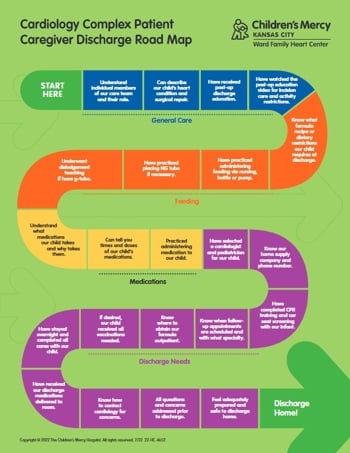
Heart Center Care Maps
Caring for a child with a heart difference can be very difficult, and parents shared with us that it was often unclear when their child would be safe and healthy enough to go home from the hospital. Our heart experts partnered with parents from the Cardiac PFAC (Patient Family Advisory Council) to create two documents to help clarify this process. First, a roadmap to discharge was created. This shows all of the steps and milestones that need to be completed before a child is ready to go home. Second, the group created a care team description card. This shows the different teams in the hospital, their functions, and how they can help each child in their healing process. Together, the team provided some clarity to anchor families during a challenging time.